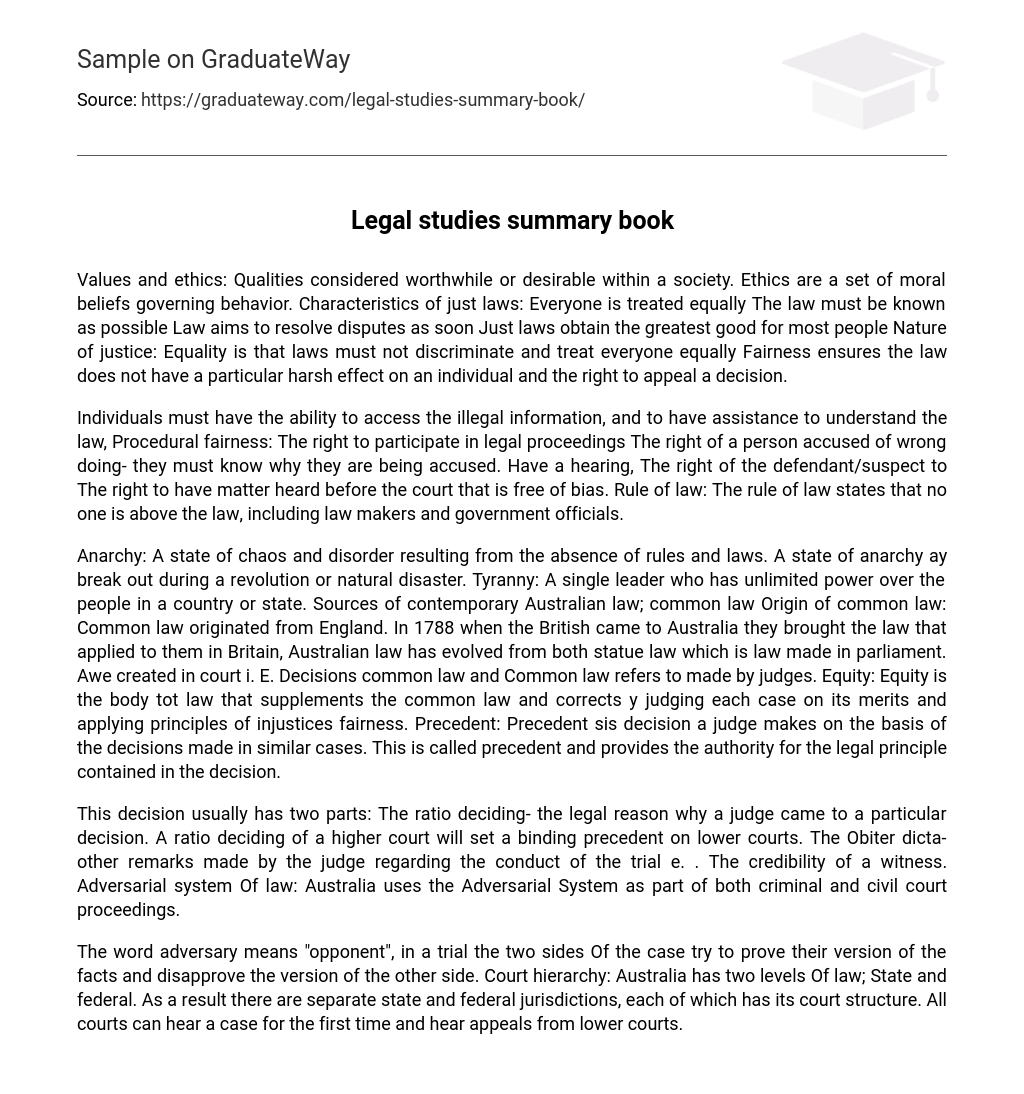Values and ethics: Qualities considered worthwhile or desirable within a society. Ethics are a set of moral beliefs governing behavior. Characteristics of just laws: Everyone is treated equally The law must be known as possible Law aims to resolve disputes as soon Just laws obtain the greatest good for most people Nature of justice: Equality is that laws must not discriminate and treat everyone equally Fairness ensures the law does not have a particular harsh effect on an individual and the right to appeal a decision.
Individuals must have the ability to access the illegal information, and to have assistance to understand the law, Procedural fairness: The right to participate in legal proceedings The right of a person accused of wrong doing- they must know why they are being accused. Have a hearing, The right of the defendant/suspect to The right to have matter heard before the court that is free of bias. Rule of law: The rule of law states that no one is above the law, including law makers and government officials.
Anarchy: A state of chaos and disorder resulting from the absence of rules and laws. A state of anarchy ay break out during a revolution or natural disaster. Tyranny: A single leader who has unlimited power over the people in a country or state. Sources of contemporary Australian law; common law Origin of common law: Common law originated from England. In 1788 when the British came to Australia they brought the law that applied to them in Britain, Australian law has evolved from both statue law which is law made in parliament. Awe created in court i. E. Decisions common law and Common law refers to made by judges. Equity: Equity is the body tot law that supplements the common law and corrects y judging each case on its merits and applying principles of injustices fairness. Precedent: Precedent sis decision a judge makes on the basis of the decisions made in similar cases. This is called precedent and provides the authority for the legal principle contained in the decision.
This decision usually has two parts: The ratio deciding- the legal reason why a judge came to a particular decision. A ratio deciding of a higher court will set a binding precedent on lower courts. The Obiter dicta- other remarks made by the judge regarding the conduct of the trial e. . The credibility of a witness. Adversarial system Of law: Australia uses the Adversarial System as part of both criminal and civil court proceedings.
The word adversary means “opponent”, in a trial the two sides Of the case try to prove their version of the facts and disapprove the version of the other side. Court hierarchy: Australia has two levels Of law; State and federal. As a result there are separate state and federal jurisdictions, each of which has its court structure. All courts can hear a case for the first time and hear appeals from lower courts.





